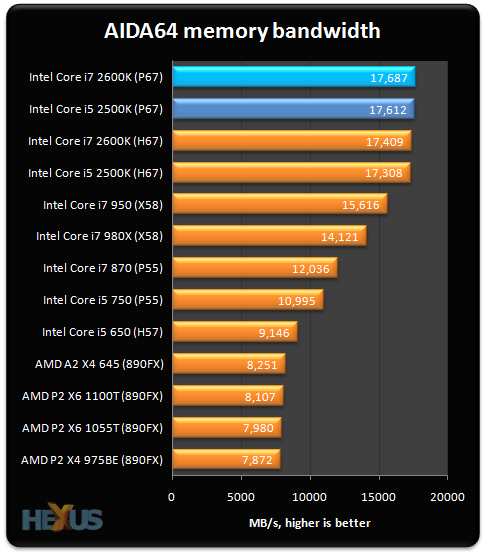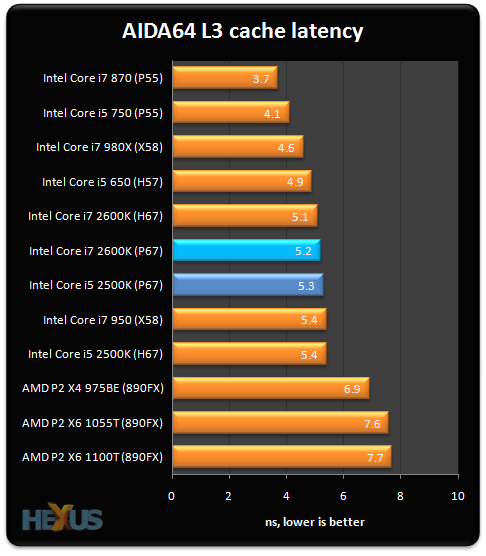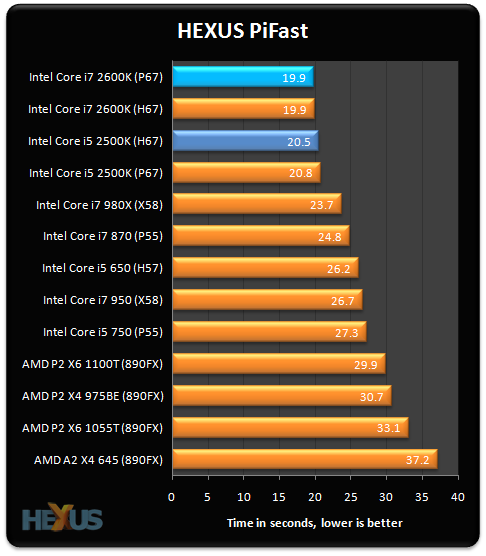Memory considerations, plus mid-load benchmarks

The bandwidth test is a composite of the read/write benchmarks spat out by AIDA64, and the results are surprisingly good for the new Sandy Bridge chips, helped no doubt by the high MHz speeds of the cores once Turbo Boost is taken into account.

Focussing on L3 cache - or last-level cache in Intel's parlance - which is fundamentally important to how Sandy Bridge works, the 2600K and 2500K are middle-pack performers, though the fact that latency is partially driven by frequency muddies the picture,

High frequencies and a decent number of instructions per clock cycle mean that Sandy Bridge is rather handy in the number-crunching HEXUS.PiFast test.

Converting WAV files into MP3s requires the same kind of processing as that found in PiFast. This means that the premium Sandy Bridge parts - 2600K and 2500K - are sharp here.









